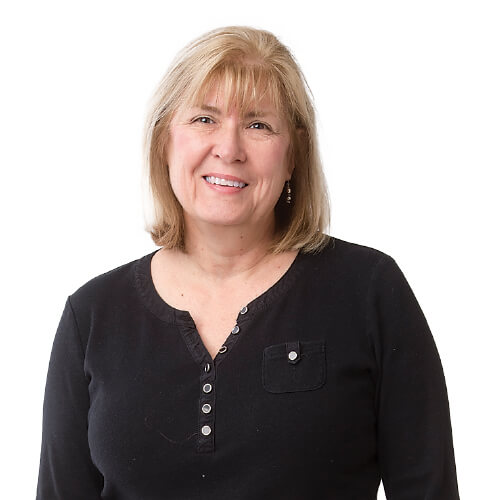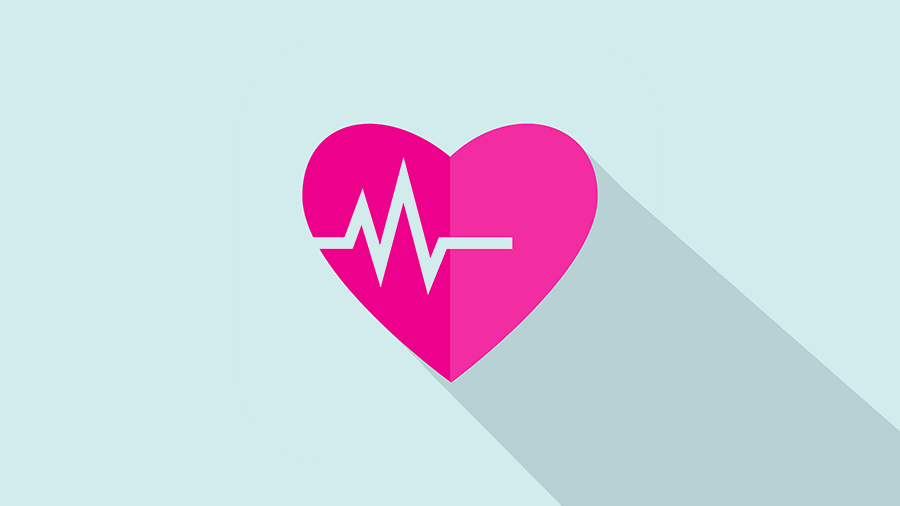Health & Wellness
They're Heart Smart Now
For these five women who survived cardiac episodes, heart month lasts all year.
Ask a cardiologist about preventing and treating heart disease, and chances are, within the first few seconds, he or she will hit you with this key fact: Heart disease is the number one killer of men and women in the United States, more deadly than all cancers combined.
And while men experience heart disease at a higher rate than women, they’re also more likely to survive a heart attack or sudden cardiac arrest. Why? Because women develop microvascular heart disease more frequently than men, which is often not picked up by diagnostic procedures. As a result, the disease process often is further along when they finally get treatment.
“Maybe there is enough delay from diagnosis to treatment that it leads to poorer outcomes,” says Mercy Medical Center cardiologist Monica Aggarwal.
There is good news, though, especially when it comes to coronary artery disease (CAD), the most common cause of heart attack and sudden cardiac arrest. CAD can be detected with proper testing and often does produce symptoms, which, if accurately diagnosed, can lead to effective interventions, from lifestyle changes and medicines to surgical procedures.
Though genetics are one risk factor for CAD, reducing other risk factors like obesity, diabetes, inactivity, smoking, high blood-pressure, and high cholesterol can help.
Whatever the cause, when heart problems do arise, knowing the symptoms—and ensuring they’re taken seriously—is crucial, as is having access to life-saving techniques, including cardiopulmonary resuscitation (CPR) and devices such as an automated external defibrillator (AED).
To mark American Heart Month, we tracked down four Baltimore women who suffered heart disease at relatively young ages, and talked to them about how they survived it—and how it changed their lives.
Heart Smarts For Women
If you think heart disease confines itself to men, the overweight, smokers, or the elderly, think again. Those may be risk factors for heart disease, but even young women especially those who combine smoking and birth-control-pill use—and the seemingly fit may be at risk, warns the American Heart Association. In fact, some 90 percent of women have at least one heart disease risk factor, the AHA estimates.

“It was Saturday before the doctors said they were confident I was going to live.”
Ginnie Gick
Ginnie Gick thought she was in reasonably good health before the May 2010 morning when she collapsed with a sudden cardiac arrest. Though she’d been diagnosed with a cardiac arrhythmia years earlier and prescribed a low-dose beta blocker, it had rarely caused her problems and was far from her mind that Thursday morning as she prepared breakfast for her two boys, then ages 5 and 9.
“I literally dropped dead in my kitchen,” says Gick, now 48. Her then 11-year-old daughter had already left for school but her sons raced upstairs to summon their dad, who called 911 and began chest compressions. Gick can recall nothing of the day, but she knows that by the time an ambulance crew got her to Howard County General Hospital, they’d shocked her heart back into “some semblance of a rhythm,” and that she was then quickly flown to The Johns Hopkins Hospital. There, doctors put her in a medically induced coma and began therapeutic hypothermia, lowing her core body temperature in an attempt to prevent damage to her brain. “It was Saturday before the doctors said they were confident I was going to live,” says Gick.
Today, Gick has some memory issues and a mild tremor in her hand, “but if that’s the worst, I’ll take it,” she says.
The cause of Glick’s cardiac arrest wasn’t clear until another tragedy struck: Her brother died of a sudden cardiac arrest in 2012. Researchers at Hopkins looking at both siblings’ DNA found that they share a genetic mutation that may be to blame.
Further testing has revealed several family members—including two of her children—with the mutation, information that will help them take preventive measures. The experience “has kind of led me on this major life quest to make sure everybody knows CPR, and that there are as many AEDs as possible in the world,” says Gick, who worked with the American Heart Association in 2014 to help pass Breanna’s Law, which requires high-school students to learn CPR.

“I think I’ve adjusted well to the few changes I needed to make. I’m in control now.”
Linda Hamper
Linda Hamper was well aware of her family’s history of heart disease, so in 2008, when her primary-care physician recommended a test to determine her coronary calcium score, she obeyed. “It came back positive, but not a high positive,” says 62-year-old Hamper, who wasn’t quite as good about following her GP’s recommendation to see a cardiologist.
“I wasn’t having symptoms,” she says. “So I really didn’t think it was, like, all that important.” Two years later, a second primary-care physician nudged her toward a cardiologist once again, but Hamper, a bookkeeper and office manager, was exercising several times a week and felt mostly healthy. After exercise, “I was a little winded but I thought, ‘Who wouldn’t be winded?’” she says, recalling that she pinned her symptoms on a recurrence of asthma, even though her asthma had been in check for 15 years.
It wasn’t until 2014 that Hamper finally took her doctor’s advice and sought out a cardiologist—Monica Aggarwal of Mercy Medical Center. “She advised a stress test, and the stress test was not good,” says Hamper. A nuclear stress test was inconclusive, but Aggarwal had lingering concerns and wanted to dig deeper. The next test, a CT angiogram, showed the cause of the symptoms: A greater than 75 percent blockage in the left anterior descending artery.
With a stent in place and a cardiac rehabilitation program under her belt, Hamper says she no longer feels winded when exercising. Always a fairly healthy eater, Hamper has eliminated dairy, red meat, and boosted her intake of fruits and vegetables, with an eye toward reducing inflammation.
“This is the diet Dr. Aggarwal believes is going to lessen the chances of anything happening again,” she says. “I think I’ve adjusted well to the few changes I needed to make. I’m in control now.”

“We tend to be a lot more open about health issues now.”
Tonya Mason
When then-29-year-old nurse Tonya Mason woke up with a sore left arm one morning in 2012, she didn’t think much of it. It could be the sign of a heart attack, she knew, but as she went about her day, running errands and gardening, Mason pushed aside the idea, dismissing it as unlikely at her age.
“I was thinking, ‘There’s no way that’s what’s going on with me,’” says Mason, who had suffered from diabetes since age 7 but was otherwise healthy, including normal cholesterol and blood-pressure levels. When she began to feel pain just beneath her ribs, “I chalked it up to maybe gallbladder or maybe I was coming down with something,” she says. She took an aspirin, “just for good measure,” but it wasn’t until bedtime, when she laid down and felt short of breath, that Mason realized she might have a serious problem.
At Upper Chesapeake Medical Center, a normal EKG and vital signs seem to point away from heart attack, but when her blood work returned, things quickly took a scary turn. “They put me in a glass room with sliding doors, and usually that’s a bad sign,” says Mason, whose cardiac enzymes were elevated. A cardiac ultrasound soon confirmed Mason was in the midst of a heart attack and she was whisked to LifeBridge Health Cardiovascular Institute, where interventional cardiologist Ali Trabrizchi found a 100 percent blockage in one artery and an 80 percent blockage in another.
With two stents in place, Mason has fully recovered. Her diabetes and genetics—Mason’s family has a strong history of heart disease—likely contributed to her heart problems. And while her family hadn’t talked much about their risk for heart disease in the past, “We do talk about it now,” says Mason. “We tend to be a lot more open about health issues now.”

“I thought, ‘I’m just really out of shape.’”
Denise McDonnell
Fifty-nine-year-old Denise McDonnell never had a problem climbing the three flights of stairs in her townhome. That is until 2012, when she began to feel short of breath tackling the stairs, a nuisance she brushed aside as a normal part of aging. On a trip to Colorado, when she found herself so breathless and fatigued that she had to cut short a hike, she wondered if the cause could be smoke from nearby wildfires or the few extra pounds she was carrying. “I thought, ‘I’m just really out of shape,’” she recalls.
And she chalked up the fatigue and feeling of tightness across her back to an intense work project and the heavy bag she lugged to the train every day. Though McDonnell’s mother had a history of angina, McDonnell symptoms were nothing like having “an elephant on the chest.”
Still, McDonnell was concerned enough to check in with her primary-care physician, who ordered an electrocardiogram (EKG) and, suspecting asthma, referred her to a pulmonologist. But it was nearly six weeks after the symptoms first started—and a trip to Ireland—before McDonnell finally saw a cardiologist. By then, she’d been feeling increasingly exhausted and unwell. And while her resting EKG had been normal, five minutes into a stress test, “They stopped me and said it’s irregular,” says McDonnell, who underwent cardiac catheterization that showed two 90-plus percent blockages requiring two stents in the left anterior descending coronary artery (LAD).
Her experience was, not surprisingly, a wake-up call. Two years later, she’s committed to eating well and exercising and is more alert to potential signs of heart problems. Looking back, McDonnell, a pharmacist who works in management at a health-insurance company, says dismissing symptoms, as she knows she did, isn’t uncommon among women. “You think it’s something else,” she says.

“I’m a very hyperactive person. I never sit still.”
Helen Robinson
“I’m a very hyperactive person. I never sit still,” says 60-year-old Helen Robinson, who, in the fall of 2014, suddenly found something was slowing her down.
Five years earlier, sharp chest pains had sent Robinson to the emergency room, where she was diagnosed with acid reflux disease and sent home. This time, though, Robinson had no such pain, but was increasingly finding herself short of breath. It could be the sign of a heart attack, she knew, but “I pushed it off to the side and said, ‘This is just my acid acting up.’”
Even when her left arm began to ache, Robinson dulled the pain with over-the-counter medicine and continued to work the night shift at H&S Bakery. Then one night, still short of breath and nursing a sore arm, “I felt like someone’s hand was around my heart and was squeezing,” she recalls. Robinson finished her shift, “popped an aspirin” and headed to bed. It wasn’t until the next day that she realized she was fooling herself. “I knew it wasn’t acid,” she says. Even though she wasn’t in terrible pain, “I knew it was a probably a heart attack.”
Although active and not overweight, Robinson had high cholesterol, a less-than-stellar diet, and a medical history in her family—her mother had died of a heart attack at age 52.
At Mercy Medical Center, she was admitted and told her blood work showed elevated cardiac enzyme levels, suggesting heart damage. With that, she was off to Medstar Union Memorial Hospital, where cardiac catheterization showed a 99 percent blockage in her coronary artery. Once a stent was in place, “They took me back to my room and I’ve been up and running ever since.”
Some tips from the experts on how to ensure
early treatment and prevention of heart disease:
Know the risk factors: For heart disease, they include age, and genetics (men also have greater risk), tobacco use, high cholesterol, high blood-pressure, inactivity, obesity and being overweight, and diabetes. Everyone should work to reduce controllable risk factors, starting from a young age.
Know the symptoms: Chest pain, squeezing or fullness in the chest; pain in one or both arms, the back, neck, jaw, or stomach; shortness of breath; fatigue; palpitations; dizziness or lightheadedness.
Heed the symptoms: Women in particular sometimes put off seeking help if their symptoms aren’t debilitating or don’t present as classic chest pain. But anyone waiting to see a cardiologist “strictly based on having or not having chest pain . . . will miss diagnosing heart disease early in its course,” says Ali Tabrizchi, an interventional cardiologist at LifeBridge Health Cardiovascular Institute.
Get screened: Since the hallmarks of heart disease can start accruing in childhood, everyone should have at least one physical in their early 20s to help assess their risk. Also, high blood-pressure and high cholesterol are asymptomatic, so it’s important to have regular checkups.
Get your score: University of Maryland St. Joseph Medical Center cardiologist Stephen Pollock strongly recommends a cardiac calcium score for women over the age of 50, women and men over the age of 45, or anyone with multiple risk factors. The inexpensive test involves a CT scan that identifies the early presence of coronary heart disease (CHD) and can lead to early treatment.
Change your life: Regular exercise and a healthy diet are vital for good heart health (all the better if you start early in life). Exercise five to seven days a week, if possible, and eat a diet high in fresh fruits, beans, and vegetables and low in red meat and processed foods.
